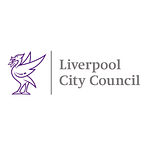Covid-19 and Liverpool
Over the last few weeks we’ve all become experts, of varying degrees of knowledge, in infectious disease; specifically in COVID-19 which didn’t even exist last November. Now I’m not an expert, so the intention of this blog is to explain some of the key terminology that you may have heard, and give some insight into the likely pattern the virus will take in Liverpool.
A major global pandemic has been predicted for years, most famously by Bill Gates as recently as last year. In fact outbreaks of infectious disease are more common than you may think, with several occurring in various countries every year, but more often than not they are contained and don’t become a global threat. Where an infectious disease does become worldwide the effects can be devastating, not least in the resulting loss of life. Some of the more well-known pandemics include:
- Spanish Flu (1918–20) — upwards of 100M deaths
- Asian Flu (1957–58) — 2M
- Smallpox (1877–1977) — 500M
- HIV/AIDS (1960-present) — 32M
- Swine Flu (2009–10) — upwards of 500,000 deaths
And there have been some notable close calls, the most recent one being the Ebola outbreak in West Africa.
So what is COVID-19 and what will the impact be on our city? It is a new strain of coronavirus that can affect lungs and airways and can be particularly severe for older people as well as those with certain underlying health conditions. As it’s a new disease the data is not robust enough to confidently predict what the likely impact will be, or how the measures that have been introduced, social distancing for example, will affect how the disease is spread. However modelling work has been undertaken, both by Public Health England and Lancaster University based on what has happened in other countries, for Liverpool which is explained below.
Reproduction value — this describes the average number of people a person infected with COVID-19 would pass the disease onto. We think for this disease R=2.5 which means if I was infected I’d likely go on to infect 2.5 other people. This is quite high so the disease is spread through communities quite quickly, but not as high as say chickenpox where R=10.
Infection attack rate — this tells us what proportion of the population are likely to get the disease. For COVID-19 the above models suggest this will be between 65% and 80% of the population. This would mean between 320,000 and 400,000 of our residents.
Latent period — this is the time it takes from being infected with the disease to becoming infectious. It’s estimated to be 4 days for COVID-19.
Clinical attack rate — around 50% of the population are likely to display symptoms.
Hospitalisation rate — it is estimated that 8% of the population will require hospital treatment (this figure varies considerably by age). This could mean up to 40,000 of our residents needing hospital treatment during the course of the outbreak.
Severe illness — an estimated 2% of the population will need intensive care unit (ICU) support while in hospital (around 10,000 people in Liverpool), which has been a national cause for concern as there are currently insufficient beds to cope with the demand.
Infection fatality rate — sadly COVID-19 will continue to claim lives and the models suggest that up to 1% of the population may die (again this varies considerably by age).
Flattening the curve — the curve describes how the disease may spread in a population over time. As more people become infected the curve rises to eventually hitting a peak after which the number of infections will reduce. A gradual peak is better, and explains why we’re all stuck at home, as it allows emergency and frontline services to cope with the demand they’ll be facing (it’s also worth noting that the workforce could also be reduced by up to a fifth during peaks).
The chart below is based on a reasonable worst case scenario modelled by Public Health England and shows where we are with regards infections and how this will change over the coming weeks to peak in mid-May.
I need to stress that the data contained in this blog may not (and hopefully won’t) happen. The data is based on the best assumptions that are currently available. What is clear is that there will be increasing demands placed on the NHS as well as on our staff who work in the community providing social care and other essential or key services. We will also have growing numbers of vulnerable residents in our community who will need food or other types of support.
Once the immediate health crisis has been dealt with (and it will be), we will have to explore the wider impact of COVID-19 such as the economic fall-out for individuals and businesses, or the impact on mental health, or on children. There should also be a national debate on the way we live our lives and how we work, because with unrestricted global travel and the rise of densely populated cities there is a likelihood of this happening again.
Stay safe everyone
Richard Jones
Liverpool City Council’s Head of Intelligence and Analytics
